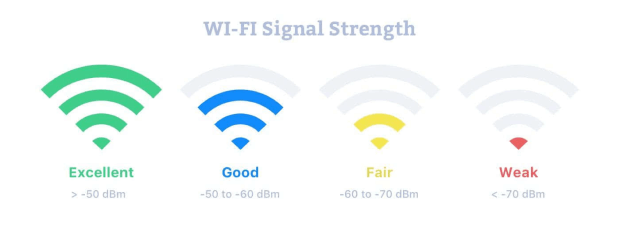
How will we understand when a marketplace is overrated? The equity marketplace appears at a glance: incomes (P-E ratios, book value, earnings-to-growth (PEG) ratios, and valuations to see if shares, or entire markets, are overpriced or underpriced. Is there a similar metric for actual property, a rule of thumb that tells you when a property, or the complete real estate marketplace, is overpriced or underpriced? Mature markets use a few hard policies of thumb to decide over-or underneath pricing in real property. The first is the ‘gross hire ratio.’ Divide the sale price of the belonging by the gross annual hire it’s going to get. Gross rent does not account for the costs of the loan, maintenance, or society expenses. If a flat sells for Rs1 crore and may be rented for Rs50,000 a month, or Rs6 lakh a year, the gross lease ratio is sixteen.6.
Real property traders use a difficult rule of thumb that asserts
Purchase at 10 and promote at 20. But whilst the rent ratio is 10 and promotes whilst it touches 20 because the belongings are overvalued. The 2d metric is the yield, which switches the 2 numbers. Divide the gross annual rent by the sale value of the property. The annual rent of Rs6 lakh divided by a capital cost of Rs1 crore offers a yield of 6%. Mature market thumb regulations say buy at a yield of 10% and sell at five.
I used both the metrics and attempted to look at how buying or selling prices and rents behave in Delhi. I picked a B category location in South Delhi (SD) and an antique middle-elegance hub in East Delhi (ED) and appeared on the assets search web page to examine the prices and rents for comparable houses. The SD flat has a sale tag of Rs 3.5 crore and is rented out for Rs 65,000 a month. This gives a gross rental ratio of virtually 45 and a yield of two.23%. The ED flat has a sale price of Rs1.8 crore and rents at Rs30,000 a month. This gives a lease ratio of 50 and a yield of 2%. If the actual property market guidelines were to work in India, then the house prices would fall, or rents would rise, or both.
Related Articles :
- Calculating Loan Installments With an EMI Calculator
- Challenger financial institution PCF launches the ONLY savings deal to match inflation.
- ING Real Estate accused of ‘acting like the mafia.’
- In the biggest deal in real estate history, DLF promoters
- Investing Basics – Stocks, Mutual Funds, Real Estate & Online Investing
The valuations are manner buy off the charts, Real, but it’s unfair to apply the mature marketplace guidelines in India.
Mature markets have a much decrease value of capital and don’t suffer the rate escalations because of black cash. One coping with that might be used is the yield on commercial real estate in India. A few real estate specialists said that a 7% yield is ‘desirable’ and the belongings are ‘funding worth.’ Why can’t we follow that yield metric to residential? No, say belongings specialists. Residential real estate is exceptional. You can’t have a look at a residential real property like any other property—it is specific. How’s that? People purchase for themselves; they purchase for the long term, they can preserve for a long time; human beings don’t buy for yield; they purchase for capital appreciation. But, we’ve no longer visible a lot of capital appreciation in residential actual property for some years now. Some of the overpriced Gurgaon condos are all the way down to half price and not selling to buyers; what appreciation?
Why will people keep investing in annual property if there is no capital appreciation in the near term? Because it’s an extraordinary argument because in a single, you borrow to invest, and within the difference, you invest out of your savings. This gets any other line of argument because they examine the EMI like a SIP. A SIP permits you to shop for a growing and falling marketplace in small portions over a long period, along with your cash. An EMI lets you pay borrowed money over 15 years for a choice you made at a fixed rate over time. An EMI does not permit you to buy cheaper whilst real estate markets crash. Borrowing to market time is a negative investment method. Something can be the asset class you are concentrated on.
Remove all the noise around the residential actual property, and what is left is this:
Other than the truth that the constant supply of black money has raised residential real property prices in the Indian metros, particularly Delhi, there seems to be no other purpose for the present-day property valuations in an oversupplied marketplace. Real property has been a conventional source of black money in India. Still, if the Modi government’s crackdown on corruption and black cash makes a dent in this, we have to expect the depression in actual estate prices to continue.
We surely want to shift our mindset from believing that a career is one manner journey a one-way journey to earning money in the end. The heaps of humans stuck behind-schedule initiatives inside the NCR have found out the difficult manner that real property isn’t a sure bet. Rents and EMIs converge in mature markets; however, not in a marketplace like India. But how huge does that difference need to be? If you want to shop for a residence to stay in these days, do the math. Does it make more sense to hire properly now or purchase? Suppose the difference between the rent you want to pay and the EMI for the residence you need to stay in is huge. Would it make more sense to begin a SIP with the money you keep on the EMI? Otherwise, you see yourself living in that residence offor0-30 years ahead? For traders in the residential real estate – you need to be sincerely brave to step into this marketplace these days, or you’ve got cash that wishes a sump.
EndNote
To individuals who persist in announcing that real property is a positive win over a very long time, I can find the best factor for u in this paper (bit.Ly/2wzlLyG) by Piet MA Eichholtz, which appears at real property charges of a Dutch condominium from 1628 to 1973. This nicely noted paper unearths that expenses increased over that length and grew simply three—2% 12 moyearrom from World War 1 to 1973. There are durations of very high increases between these two time points, and you want to recognize how to time the marketplace in real estate to make supernormal income. Not as special as inside the fairness market timing technique.












